It’s not difficult to determine that biomechanical differences are at play when one watches Jacob deGrom and Japanese prospect Hiroto Takahashi pitch.
Hiroto Takahashi is looking even more like his friend Yoshinobu Yamamoto every year. That’s what hanging around greatness does.
— Yakyu Cosmopolitan (@yakyucosmo) February 2, 2024
The eye readily detects that their motions differ in multiple ways. deGrom—like most pitchers developed in North America—adopts a pitching motion that is generally more compact and explosive. Takahashi—like many Asian pitchers—employs a more free-flowing motion with legs and arms extending every which direction.
Dr. Takanori Oi and his research team from the American Sports Medicine Institute and Nobuhara Hospital and Institute of Biomechanics translated the flowery analogies into hard, scientific data in a study published in 2019. They found that professional American pitchers were taller and heavier than their age-matched Japanese counterparts. Additionally, Americans possessed a more “closed” lead foot landing position (i.e. towards third base for righties), a greater lateral tilt of the trunk, more knee extension at ball release, and larger forces induced upon the inner elbow and shoulder at maximum shoulder external rotation. The Japanese hurlers, meanwhile, had longer stride lengths when normalized for height, a greater angle and speed of pelvic rotation at foot contact, greater speed of shoulder internal rotation and elbow extension as well as shoulder abduction angle at ball release, and greater force induced upon the shoulder during trunk rotation.
These anthropomorphic and biomechanical differences allow American pitchers to (generally) obtain greater pitch velocities. However, these differences aren’t without drawbacks as the authors speculated they result in North American pitchers who are more prone to elbow injuries—velocity and excessive force at the inner elbow are two variables strongly associated with UCL injury—while increasing the risk of shoulder ailments for Asian pitchers—longer stride lengths, a more open lead foot position upon landing, and earlier and quicker pelvic rotation causes the trunk to lag, likely resulting in increased force being placed on the shoulder.
Not all movements involved in pitching biomechanics can be easily seen on video, at least when the feed is not captured from a strictly front/back and/or profile view. However, a few of the aforementioned elements can be. For example:
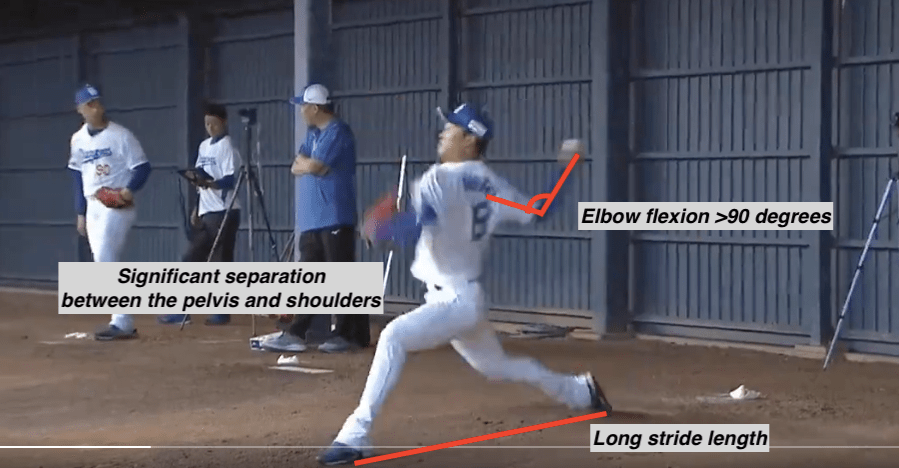
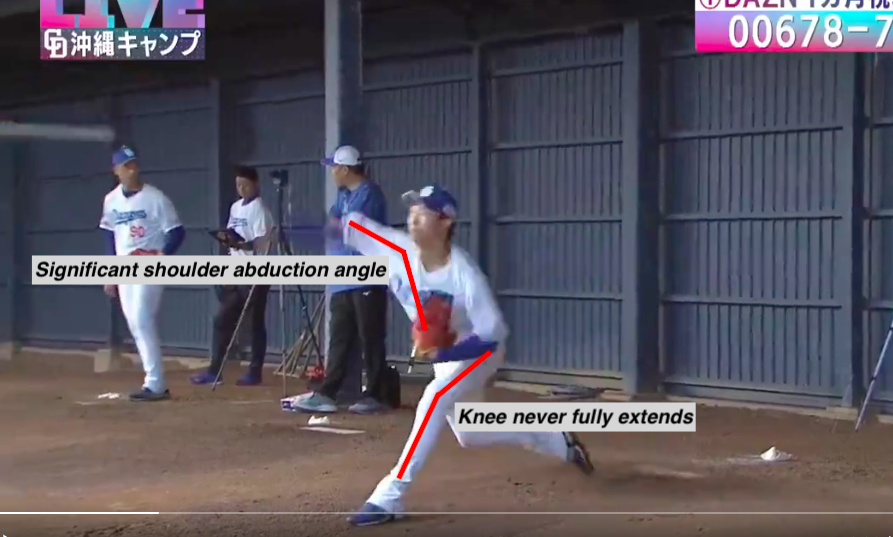
By and large, deGrom and Takahashi adopt the general biomechanical properties we see from North American and Asian pitchers, respectively. However, in what is perhaps unsurprising news, many of the top performers from Japan who have recently arrived Stateside—namely Yu Darvish, Shohei Ohtani, and Yoshinobu Yamamoto—own biomechanics that are more similar to American pitchers.
Darvish was the first to come over from the Land of the Rising Sun and he has largely excelled since his arrival. The five-time All-Star possesses a deep arsenal—he had deployed nine different pitches in 2023 according to Baseball Savant—with a sinker and four-seam that both sit in the mid-90s. Darvish achieves such velocities by forcefully extending his lead knee, laterally tilting his trunk, and maintaining elbow flexion below 100 degrees at foot contact. Although his motion still contains elements more common among Asian pitchers—like extending his front knee fully before driving down the mound—his overall mechanics are largely Western.
This is even more true of Ohtani.
Ohtani’s mechanics are functionally similar to that of deGrom, with the major difference being that Ohtani achieves a deeper squat on his back leg which allows him to stride down the mound further; Ohtani placed in the 90th percentile in extension last summer while deGrom was in the 82nd (Notably, deGrom has seen his extension decrease significantly over the last two seasons—dropping from the upper-90s to low-80s percentiles—likely due to his rash of significant injuries).

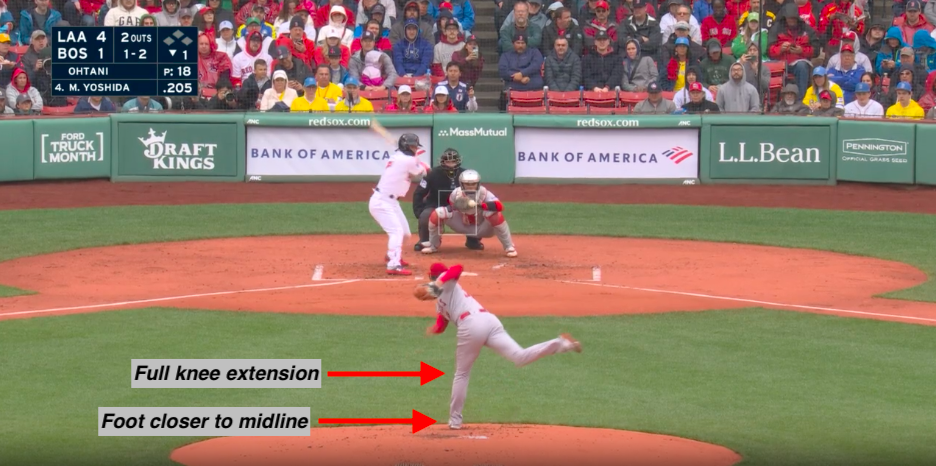
The newest Japanese phenom to arrive, Yamamoto’s mechanics and workouts have already become things of legend. He seamlessly blends elements of Eastern and Western pitching mechanics while adopting influences from javelin throwing, one of his favorite training workouts.
Yoshinobu Yamamoto’s Mechanics
Video from @PitchingNinja
— Bronx Pinstripes (@bxpinstripes_) December 18, 2023
Yamamoto steps straight back and extends his knee fully during leg drive—core components of a more Asian approach—while also maintaining an elbow flexion angle around 90 degrees at lead foot contact and forcefully driving his knee into extension. He also effortlessly transfers energy from his back leg through his hips and trunk and ultimately out his arm in a way that is virtually indistinguishable from what a javelin thrower may do at the Olympics.
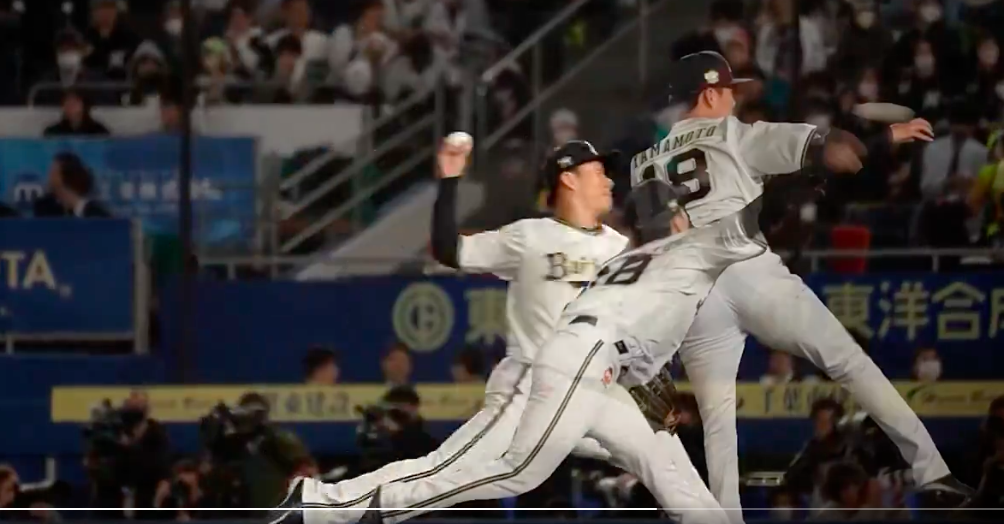
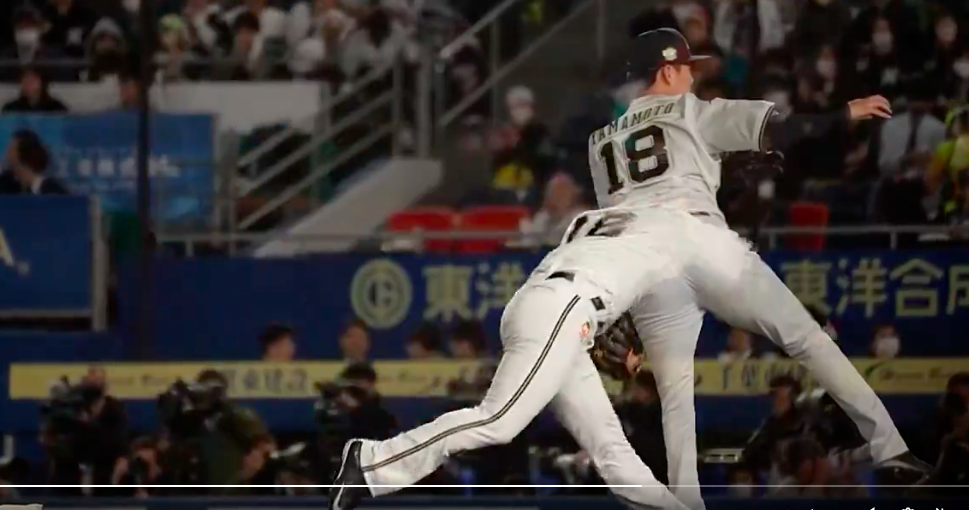
Perhaps it should come as no surprise that both Darvish and Ohtani have been hampered by multiple inner elbow injuries over their illustrious careers. They are both tall pitchers with significant mass who through the ball hard and possess throwing mechanics that are similar to North American pitchers. Alternatively, Yamamoto is younger, shorter, slimmer, and possesses mechanics that are influenced by both North American and Asian techniques. This is not to suggest that Yamamoto will or will not sustain a major elbow injury at some point during his career—he can still touch 100 mph after all—but rather serves as another data point suggesting that Western and Eastern pitching mechanics are melding, particularly among Japan’s elite talent.
